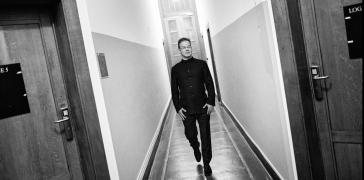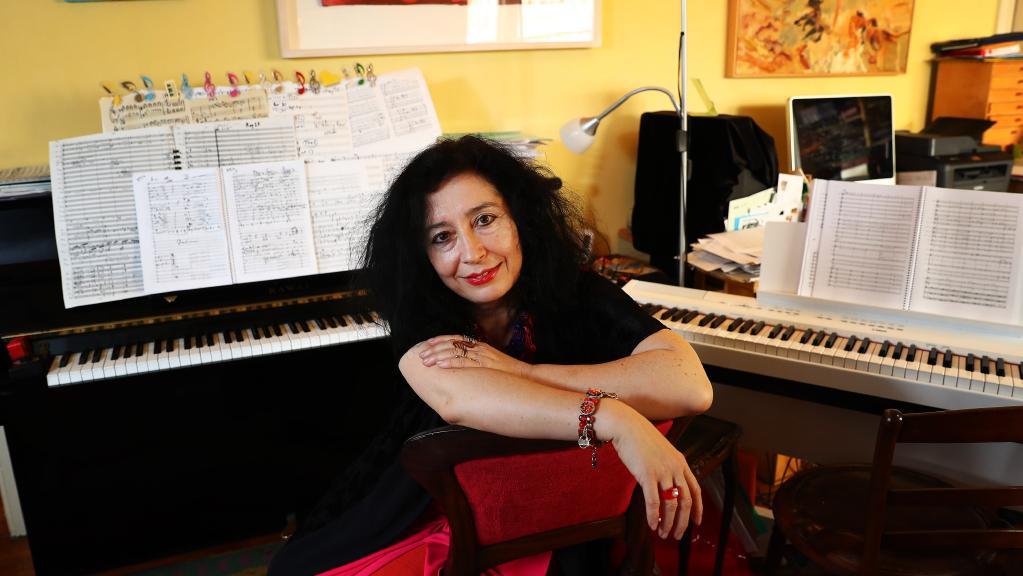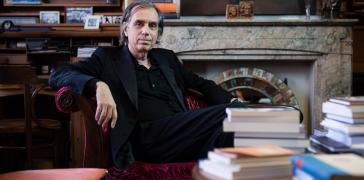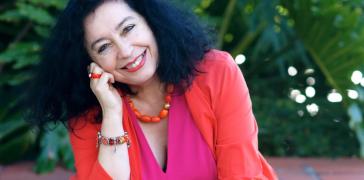
"Music can incredibly influence the viewer"

Interview with ELENA KATS-CHERNIN
Commissioned by television channels ZDF/ARTE, Uzbekistan born Australian composer Elena Kats-Chernin composed new music for Varieté, a 1925 silent film. On Friday 15 September, the Belgian National Orchestra conducted by film music expert Dirk Brossé, will premiere this work for large orchestra at Bozar. During the concert, the film classic will be shown in a restored version on a big screen. A conversation with composer Elena Kats-Chernin!
You studied composition in Moscow, Sydney and Germany, including with Helmut Lachenmann. How did you get into film?
Besides music, the visual aspect could also appeal to me from an early age: I was interested in theatre, in drawings and played the piano as a joke once in a show while lying on the instrument itself... In the mid-1980s, I discovered German 'Tanztheater'. I became friends with Reinhild Hoffmann, the director of Tanztheater Bremen, which was later based in Bochum. I learned an incredible amount from her. For 10 years, I made soundtracks for dance theatre. In parallel, I also started working for drama plays, including for director Andrea Breth. What I loved immensely was that every piece needed something new, something different. During that period, I gained a lot of experience in the performing arts: what is the function of sound in a performance? What influence does sound have, not only on the audience, but also on the people on stage? In 1998, Nina Goslar of ZDF/ARTE asked me if I wanted to compose new music for a silent film. That was then for The Phantom Carriage (Körkarlen), a 1921 Swedish horror film. Music for two other silent films followed shortly afterwards, always for small ensemble. 20 years later, ZDF/ARTE’s Nina Goslar and Thomas Schmölz came back to me for Varieté. And this time I was able to write music for large orchestra!
Can you tell us a bit more about your work process?
I still compose in an archaic way: at the piano with pen and paper. I improvise a lot, watch the film, play music to certain scenes and observe exactly what I experience while doing so. What do I feel with the combination of music and film? What exactly do I want to feel? And how does it continue after this scene? Composing music like this involves a great deal of dramaturgical work. Music allows you to make certain images visible - or just to hide them. Music can incredibly influence the viewer. As a composer, you therefore have a great responsibility! What excited me about Varieté is that there are real show numbers - trapeze acts by the performers - and these require a very special musical response.
Silent films used to be often accompanied by live pianists. Actually, your composition practice is partly in line with that?
As a pianist, I could indeed accompany the entire film with music while improvising. At my house, I have done that many times. New ideas keep bubbling up in me. However, when you have to write music for several musicians - in this case a large symphony orchestra - everything has to be laid down in detail. The final score for Varieté counts more than 600 pages! The synchronisation of music and film needs precision: above the score is an entire description of what is happening in the film at that moment, so that the conductor knows where he or she is in the film in every measure. Sometimes problems also crop up, for instance in the dance scenes that are in the film. You derive the pulse from the characters' foot movements and compose music based on that, but those dance scenes are not necessarily shot in one take and the pulse changes slightly from shot to shot. Then you have to be creative with solutions!
Let's talk about the film itself for a moment: what does this 1925 classic have to offer people today?
On the one hand, there is the huge historical value of the film, which is largely set in pre-war Berlin. The most evocative location is undoubtedly Wintergarten, a Berlin variety theatre that was world-famous. This is where the trapeze sequences take place, the salto mortale, high in the air with the audience watching with open mouths in the depths. The actors - including Oscar-winner Emil Jannings and dancer/actress Lya De Putti, who died early, are also truly out of category. On the other hand, there are the innovative camera techniques, which make this film a must-see for any seasoned film buff. At one point, the camera is suspended from a trapeze! What I personally really like, compared to current films, is that the narrative pace is slightly slower. As a spectator, you have time to use your own imagination, today that is rarely the case. And my music hopefully refreshes everything.
Can you describe your music in any way?
Describing your own music is difficult, but I'll make an effort! In any case, it is quite direct: you don't have to think about it. But it is not without complexity. The chords you expect, I just try not to give. My motifs often consist of only a limited number of notes, but try to achieve certain effect, frequently through syncopation. The score is tonal, although of course there are some dissonant moments. I use a classical symphonic orchestra, but with the addition of a piano. That is very important to me. I used the combination of piano, harp and pizzicato in the strings a few times for this film. And you can also expect a saxophone. To express the circus environment, I couldn't avoid that instrument. A saxophone gives the many show numbers just that little extra sparkle!
Info & Tickets |


